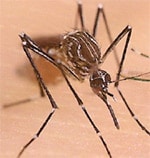By: Kristen Kocher
Today, geneticists at Cold Spring Harbor Laboratory (CSHL) in New York and their colleagues at Hebrew University in Israel published a recent study about a genetic mutation in tomato plants. According to their research, a gene, called the florigen gene, has been isolated that has the ability to boost the yielding potential of tomato plants and controls when a plant matures and flowers. The harnessing of this gene is incredibly beneficial because it works in a variety of tomato plant species and across a range of environmental conditions.
So, why is this a sweet deal for farmers? Well, the gene would give farmers the ability to grow tomato plants year-round, greatly increasing the income of money of the agricultural market. Head researcher at CSHL, Zach Lippman, Ph.D, notes, “This discovery has potential to have a significant impact on both the billion-dollar tomato industry, as well as agricultural practices designed to get the most yield from other flowering crops.” To make this deal extra sweet, this gene also enhances the taste of the tomato, making it sweeter and more palatable than normal tomatoes. Normal, non-genetically modified tomato plants produce a limited amount of sugar that they equally distribute to their fruits. With the florigen gene, the amount of sugar produced in tomato plants increases, thus making the fruit produced sweeter and better tasting overall.
The discovery of the florigen gene came when the team at CSHL was searching for genes that initiate increased yield, or hybrid vigor. Hybrid vigor, or heterosis, is a breeding process in which two plants of different varieties are crossed to produce hybrid offspring with higher yields. Charles Darwin discovered heterosis over a century ago through the study of corn and rice crops. The CSHL lab team recently rediscovered heterosis and while the mechanism is largely still unknown, their research has provided some clues as to what the mechanism may be. According to their findings, this phenomenon occurs due to a single gene that when present causes something called, “superdominance.”
The CSHL team tested many varieties of plant to identify if the florigen gene was superdominant, or always expressed when present. They catalogued a collection of 5,000 tomato plants and located single gene mutations that affect certain characteristics of the plant, such as fruit size and leaf shape. In this mutant library they noticed a trend among 60% of the plants that found a certain gene, the florigen gene, causes increased yield. According to a breakthrough publication in 2005, the florigen gene codes for the production of a certain protein, florigen, which is associated with the timing of maturation and flowering.
They believe that in tomato plants there is a delicate balance between the production of the florigen protein and another protein that controls plant development. Maturation, the 60% trend seen in tomato plants with a single gene mutation, still occurs when a single copy of the florigen gene is present, thus suggesting that it may have heterosis properties.
In the future, geneticists working on harnessing heterosis and improving crop yield have planned on researching the effects of the single gene mutation more fully. Lippman comments, “Mutant plants are usually thrown away because of the notion that mutations would have negative effects on growth… our results indicate that breeding with hybrid mutations could prove to be a powerful new way to increase yields, not only in tomato, but all crops.”
Check here for more information
Original Press Release










